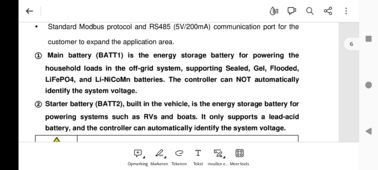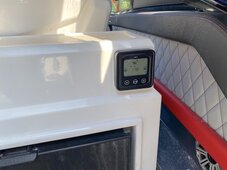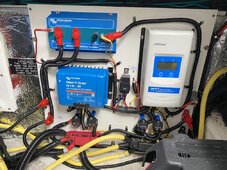It's not a dual charger, the secondary output is low current, and low voltage maximum 13.8 volts. The primary output will charge the house batteries.
The secondary output is a maintaining voltage, sufficient to compensate for starter battery self discharge, it will not charge a depleted starter battery.
Your conflicting advice suggesting you need a battery to battery charger is valid if you want to charge the starter battery from the house battery. In this case energy is taken from the house battery, hopefully replaced by solar, and converted to a suitable charge voltage profile to charge the starter battery.
For a Boat use, this is normal .
A boat start battery is only connect on the engine to start it and for the lights outside
A second battery is the house hold for the lights inside, fridge and more .
So for the time your not use the boat to move .
The start battery will only discharge on a normal nature way ( lead battery als way have a small discharge)
Same for a caravan or RV.
You never use the start battery for daily use.
If you like to charge and discharge 2 battery than you need a charger than can do this .
For the rest.
It do not thake battery power from the main battery
It do charger the 2 e battery by solar only .
And charger it with a max of 1 ampère on 13.8 volts ( you can adjust the volt)
With 1 ampère you can charge a battery ( cost a long time )
See manuel .
Part out of the Manuel.
Condition1: BATT2 starts charging when BATT1 reaches the float charging stage, and the BATT2 voltage is lower than the "Charging Return Voltage. Condition 2: BATT2 starts charging when the battery's total charging current is higher than 3A and the BATT2 voltage is lower than the "Charging Return Voltage. 4) Stop Charging Conditions Condition 1: BATT2 stops charging when the PV voltage is no higher than 2Vof the BATT1. Condition 2:BATT2 stops charging when BATT1 is not in the float charging stage and the total charging current for the battery is less than 2.5A. Condition 3: BATT2 stops charging when BATT2 reaches the "Full Voltage."
Personal note
I never go for this charger my self .
If i use power on the main battery its stop charging the 2e battery (start battery)
But again this is make for a RV or boat and normal you do not use a start battery for daily use to set coffee.
And you are not alway on a boat or RV.
Well i'm but that is my life





